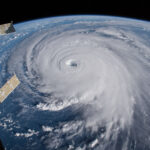Flooding in Pakistan: Death Toll Rises
Severe rainfall triggered the most devastating flood in Pakistan’s history. It swept through the villages, collapsed homes, and killed approximately 1,500 people out of which 552 were children. The loss of land and life is incomparable.
Recent news declared almost 8 million people were forced to relocate for the damage caused. Massive rainfall resulted in a sudden rise in the water level of many rivers. This caused dams to overflow and destroyed homes, buildings, schools, hospitals, and other healthcare facilities.
Stagnant Water: A Breeding Hub for Pathogens
Life-threatening diseases are spreading like wildfire throughout the whole of Pakistan. Some of these diseases include Cerebral Malaria and there is no option for treatment or cure. Other than this, stagnant water has become the breeding place for pathogenic diseases like typhoid, leishmaniasis, respiratory infections, scabies, cholera, diarrhea, dengue, and a variety of eye and skin diseases.
The situation all over Pakistan is bleak. The hard-hitting areas are the ones where children were already suffering from malnourishment. They live an unhealthy lifestyle with limited access to clean water, food, and sanitation.
Parts of the Country are Still Submerged Underwater; Government Reluctant
Certain parts of the country still remain to be underwater including Eastern Balochistan and the southern province of Sindh. A huge number of people affected by this devastating flood are seeking refuge in the constituency of foreign minister Bilawal Bhutto Zardari.
The Government, the National Disaster Management Authority is not playing an active role in this situation. Hence, the flood-affected victims are not getting adequate support in this time of distress. The locals stated that if the Government fails to aid them now, the future will witness a series of life-threatening diseases. The flood water may take up to 6 months to recede, a recent survey stated.
Refugees in the Hard-Hitting Areas
Pakistan serves as the refugee ground for approximately 1.3 million Afghans. 800,000 were residing in more than 45 majorly hit districts out of 80 severely affected locations.
The UNHCR conducted that the majorly affected districts included certain parts of Balochistan, Khyber Pakhtunkhwa, and Sindh provinces. The UNHCR has also arranged immediate funding and assistance with medical supplies and commodities to help the victims in this crucial time.
Sherry Rahman, Pakistan’s climate change minister told in an interview that richer countries should stand by poor countries that face the vagaries of nature due to climate change.
Massive Aid Operations Required
According to BBC news, Rahman said that richer countries burn fossil fuels to establish a “kingdom come”.
The flood has highlighted a stark contrast between countries that are the largest contributors to climate change to the countries that bear the impact. Pakistan is the producer of 1% of global greenhouse gas, but its geographical location makes it vulnerable to sudden climate change.
Rahman admitted that the country lacks appropriate technology and money. She is seeking flood aid from the US, Turkey, and Qatar. Rahman also stated that in order to make the infrastructure of Pakistan resilient to sudden weather changes, a lot of international support is required.
Conclusion
When a certain country or province faces the wrath of nature, along with the downfall in the economy, apart from humans, local flora and fauna suffer great loss. The devastation of houses and communities results in the scarcity of food, shelter, and clean water supply. Malnourishment and death spur up the scale cutting off proper medical supply.
Come and support the flood-affected victims in Pakistan by donating food, clothes, and other commodities. Or you can support them financially, emotionally, or mentally with the little you have in this hard time.
References
Baqir, Maryam, et al. Document Heading. www.ncbi.nlm.nih.gov/pmc/articles/PMC3609207/pdf/apjtb-02-01-076.pdf, 10.1016/S2221-1691(11)60194-9.
“Devastating Floods in Pakistan.” Www.unicef.org, www.unicef.org/emergencies/devastating-floods-pakistan-2022.
““It Is beyond Bleak”: Pakistan Floods Affecting 16m Children, Says Unicef.” The Guardian, 21 Sept. 2022, www.theguardian.com/world/2022/sep/21/it-is-beyond-bleak-pakistan-floods-impacted-16m-children-says-unicef. Accessed 22 Sept. 2022.
“Pakistan Floods: Six Month Wait for Water to Recede, Warn Relief Agencies.” UN News, 20 Sept. 2022, news.un.org/en/story/2022/09/1127051. Accessed 22 Sept. 2022.
Fihlani, Pumza, and Simon Fraser. “Pakistan Floods: Biggest Lake Subsides amid Race to Help Victims.” BBC News, 7 Sept. 2022, www.bbc.com/news/world-asia-62811704










